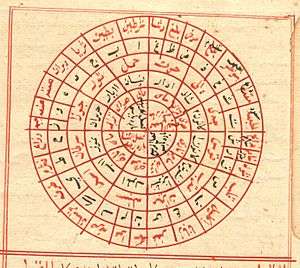Simiyya

Sīmiyā’ (from Arabic Simah سِمة which means sign Greek: σημεία, "signs") also rūḥāniyya, or ‘ilm al-ḥikma (Arabic: روحانية and علم الحكمة, lit. "spirituality" and "the dweomercraft of wisdom", respectively) is a doctrine found commonly within Sufi-occult traditions that may be deduced upon the notion of "linking the superior natures with the inferior...", and broadly described as theurgy.[1][2] This is confirmed further by al-Majrīṭī who claims to reveal the techniques by which it is possible to convoke the rūḥāniyya of the celestial bodies.[2] Theologian Abū Ḥāmid al-Ghazālī, the preacher and writer al-Kāshifī, and the Sufi Muḥyī al-Dīn Ibn al-'Arabī are amongst the most pre-eminent contributors. But al-Būnī, author of the two-volume Shams al-Ma‘ārif, is as likely as not a considerable focal point for the craft. The 13th-century Hermetic thinker had transcribed a whole corpus of material (called the ‘Corpus Būnianum’), all of which was subsumed under the spiritual science, and a majority of his works are still used as prototypes for present-day magical practice and literature. The term sīmiyā’ was the synonym of rūḥāniyya, which meant 'spirituality'. This was to be contrasted with the more lesser conformed sorcery (siḥr), deemed forbidden in Islam.
See also
Notes
External links
- Societas Occulta Islamica An academic society devoted to the study of the arcana and esoterica of the Islamicate Civilization